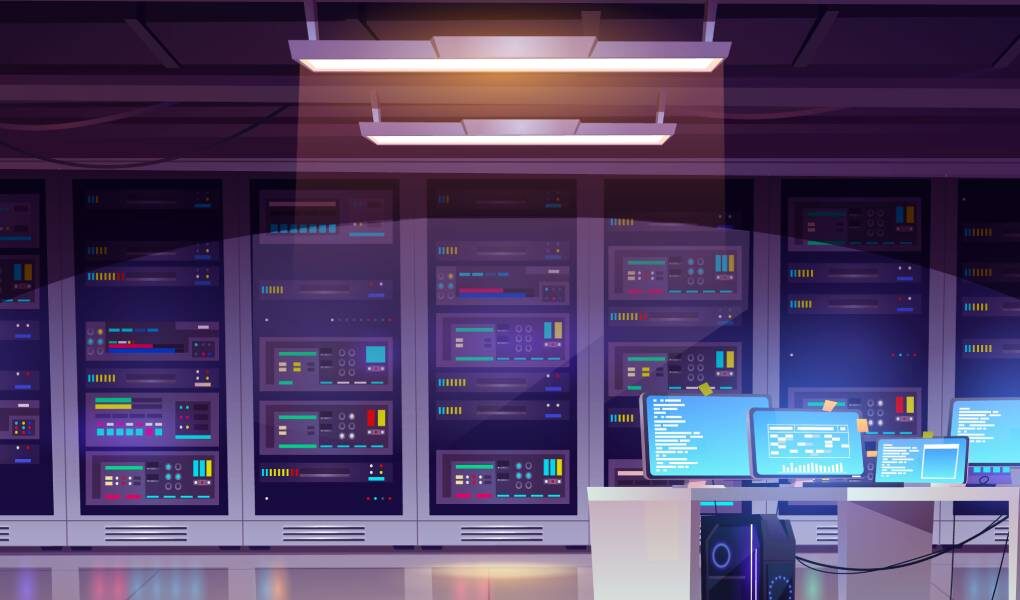Table of Contents
What Is Serverless Computing, What Kind Of Architecture It Is, What Are The Advantages, And What Are The Application Areas?
The term ” serverless ” immediately suggests a ” serverless ” structure, as the literal translation would like.
In reality, however, despite its meaning, the name refers to a cloud model that allows you to create and run applications without coming into contact with the underlying server.
It is therefore a cloud environment in which the server is still present, but where provisioning, scalability, and management operations are delegated to the service provider.
Let’s see together what technology it is and what advantages and applications it has.
What Is Serverless Computing: A Definition
A cloud model in which developers create and run applications without having to manage the servers, as the activities related to their maintenance and scalability are the responsibility of the cloud service provider: this is serverless computing, also called FaaS – Function as to Service.
This is a different paradigm than other cloud computing models, since the provider – as mentioned – is responsible for managing the cloud infrastructure, as well as scaling the apps.
In contrast, in a standard Infrastructure-as-a-Service (IaaS) cloud computing approach, the public cloud provider is paid for the server components used to run the applications. Components that are always active.
The user is responsible for increasing the capacity of the server in phases characterized by peak demand and, conversely, reducing it when it is no longer needed.
And the cloud infrastructure necessary to run a given application remains active even when the latter is not in use.
This is different in a serverless architecture, where applications are started only when needed.
In detail, when an event triggers the execution of the code, the public cloud provider assigns the resources for that code and the user pays for the service only until the end of the execution.
The only challenge for the user is to integrate their software – or their logic – into the rented cloud structures. The call of these functions is activated asynchronously (via events) or synchronously, ie according to the classic client-server model.
In the first case (asynchronous) there is the advantage of preventing an excessive coupling of the single functions and of keeping the need for resources low during program execution.
In the classic (synchronous) variant, the client must always send a separate request to the server, to invoke a corresponding function for creating the thumbnail.
This scheme, in addition to the obvious advantages in terms of costs, avoids developers those routine activities necessary to ensure the scalability of applications, in addition to the operations by which the server is prepared to be used.
In summary, serverless computing allows the management of the operating system and the file system, as well as the application of security patches, management of scalability, registration, and monitoring to the cloud service provider.
In addition, in serverless solutions, the cloud service provider runs the physical servers and allocates their resources on behalf of the user, who can deploy the code directly to the production environment.
Advantages And Disadvantages Of Serverless Computing
Able to speed up the release of applications where there is a need for high processing power “on-demand” when certain events occur, serverless solutions represent an evolution in the field of cloud services.
Among the advantages – as Forrester points out – is the reduction in costs related to both the development and the use of services in production, due to the increase in the speed of code development and the reduction of costs related to the provisioning of resources.
If in traditional cloud computing, there is a charge for running resources even when they are not used, in serverless computing, when the application code is not running, there is no charge.
As mentioned, the serverless approach frees developers from the need to manage the infrastructure, thus being able to focus on the quality of the product to be created rather than on the operation and management of the servers.
And on-demand access to compute solves the power need for very high loads such as financial simulations and real-time analysis of large amounts of data.
Other benefits of serverless computing include automatic scaling and optimization of resource use. Specifically, about this last point, since the compute and storage resources are allocated dynamically, it is no longer necessary to invest in advance in additional resources and capacity.
Positive aspects and advantages aside, adopting serverless solutions also has some limitations.
Possible loss of performance is one of them. This means that if the code is not used frequently, there may be latency issues during its execution.
And this is because, in the serverless model – if the code is not used – the cloud provider often does not fully allocate the resources, thus creating latency in the start phase if the execution takes a certain amount of time to start.
The fact, then, of not following the servers internally and not checking their logic, has some disadvantages. The first sees cloud service providers impose severe constraints on interacting with their components, thus limiting the flexibility and customization of systems by the user.
An example? In the case of BaaS – Back-up-as-a-Service environments, developers may be bound to services whose code they cannot control. This is a factor to be taken into account. If you decide to change provider you may be forced to upgrade all systems to meet the specifications defined by the new supplier.
The Application Areas
Let’s start by saying that not all applications are suitable for the serverless computing paradigm. The limits previously mentioned become quite marked especially when dealing with obsolete systems – not always easily adaptable to new technologies – or with systems that are too complex, which would risk significantly increasing costs.
Undoubtedly, the fact of being able to use resources only when needed makes serverless solutions particularly flexible and attractive models for companies.
In addition, the serverless architecture is perfect for those asynchronous stateless applications that can be started instantly, as well as for usage scenarios that involve sudden and unpredictable spikes in demand.
Serverless apps are also suitable for use scenarios involving inbound data streams, the integration of digital language assistants and chatbots, and business logic.
Other common use scenarios for the model include web apps, business process automation, serverless websites, and cross-system integration.
Increasingly, serverless computing is also used to build and manage the entire back end of an application on the cloud, a scenario for which the expression Backend-as-a-Service (BaaS) is often used.
The serverless infrastructure also represents a powerful tool when it comes to processing big data – now an integral part of numerous business contexts – which can transcode, combine and manipulate, both in a structured and unstructured form.
Then, when the functions are executed according to a defined schedule, thanks to the serverless technology, it is possible to automatically sort the databases or create backups.
What The Future Holds
The serverless is a cloud service model that aims to simplify the approach to programming, freeing the programmer from all those aspects that go beyond writing the code.
Its use has increased rapidly in the last three years, with a growth rate of 700%, and it has all the credentials to represent, in the future, one of the main development levers in the IT sector.
In the years to come – as highlighted by Forrester analysts, again in the Demystifying Serverless Computing Report – we must expect numerous developments, both as regards the serverless computing architectures, and as regards the services made available by suppliers.
Among the expected innovations, there is the possibility of serverless solutions in standardized containers. This would give developers more control and help avoid dependency relationships with their vendors.
Another expected improvement, on the other hand, concerns support for distributed or blockchain-managed transactions. The blockchain – we remember – combines very well with the storage, communication and distributed processing characteristics of serverless computing, of course, provided it possesses the functions to check the integrity of all transactions.
Also according to Forrester, the best way, in the future, to experiment with serverless computing will be in the public cloud. And, in this regard, it advises identifying the best offers of the providers with which you already have relationships or to choose based on the availability of useful supports for event management.
Finally, because of the future development of serverless procedures, it may be advantageous to immediately insert the ability to generate events in applications already under development with traditional methods.
Also Read: New Office, New Network: 7 Tips For A Top Connection



